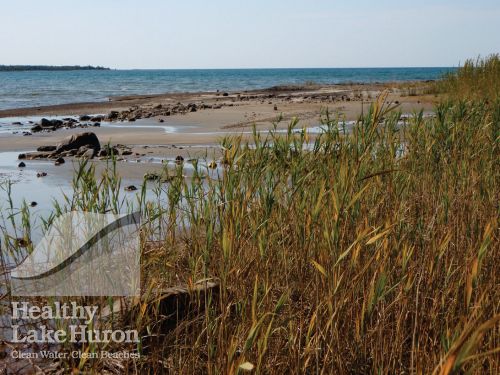Parks Canada Protects Lake Huron Beach from Invasive Phragmites

Parks Canada is a world leader in protecting natural heritage and in hosting real and inspiring visitor experiences. This is especially true at Singing Sands, a small but popular beach on Lake Huron that is part of Bruce Peninsula National Park.
The Singing Sands area is renowned for its pristine mosaic of coastal meadow and sand dune habitats that support an incredible diversity of plant species, some of them provincially rare or endangered. However, concern over a recently established colony of phragmites (Phragmites australis subsp. australis) at Singing Sands has prompted Parks Canada staff to take action against this invader.
This species of phragmites, also known as common reed, is an invasive perennial grass from Europe that aggressively takes over wetlands and beaches. It grows rapidly, forming dense colonies that outcompete native species for sunlight, soil nutrients and water.
Phragmites is able to spread rapidly in our area because it is free from the insects and plants found in its native European habitat that act as biological controls on the population. Without intervention, the native plant communities at Singing Sands will be negatively impacted and so will the experience of thousands of park visitors.
As the Singing Sands phragmites colony was discovered early, Parks Canada staff are confident it can be controlled and the habitat returned to its native state using small scale methods and the help of volunteers. However, this case points to the need for vigilance against invasive species to protect some of best remaining examples of coastal meadow and sand dune habitat along Lake Huron for all of us to enjoy.
If you would like to be involved in this restoration project, or are interested in volunteering with Parks Canada, contact staff at Bruce Peninsula National Park by phone at 519-596-2233 or by email at bruce-fathomfive@pc.gc.ca.
